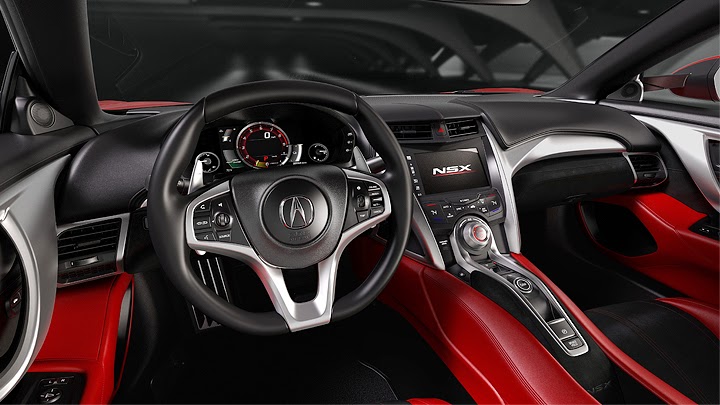
Sold in North America under Acura and everywhere else with the Honda logo, the first NSX appeared in 1991, and didn’t take long to become a worldwide success. It combined the best of 1990s looks, powerful engine and modern construction, but what really made it stand out in the crowd were the qualities which nobody used to expect from a sports car: the very same car was also easy to drive in the everyday traffic, its cabin was surprisingly practical and ergonomic, and it was just as reliable as any other Honda car. People liked it so much that it managed to change the parameters with which these cars were chosen. However, since the category still didn’t sell well enough to satisfy a generalist automaker, NSX was dropped in 2005 without a successor.
Ten years later, the truth is these vehicles haven’t become sales hits, mostly because such exclusivity is part of their appeal.What did change, in turn, was basically the rest of the market. With so many companies introducing so many models and working in so many countries, the car market has turned into an ever-increasing pursuit of the different. For generalist automakers, sports cars now help to build a bolder image, as if they spare no effort to express all the characteristics they claim to appreciate. From Peugeot RCZ to Lexus LFA, many of them were released only in the current decade. Therefore, when Acura showed the new NSX for the first time, still as a concept car and during the Detroit Auto Show of three years ago, the statement that it would actually be produced wasn’t surprising at all.







As usual, all the references made to the original car are conceptual. The new NSX is a great follower of the design trends of its time, once again. But now this means boasting an incredibly elaborate look, whose details would take a long time to be entirely noticed. The front end is particularly interesting, because it had to comply with the fact that both Acura and Honda will sell the exact same car: while the first uses a thick chrome bar above a small air intake, the other goes with a much thinner line and a much bigger grille. NSX, in turn, seems to have adopted the perfectly intermediate solution. It’s difficult not to keep admiring the muscular hood or the 19” wheels with 245/35 tires and carbon-ceramic brakes (20” and 295/30 at the back), but there’s much more to see.
Made of aluminum and sheet-molding compound, the elegant body can remind of Audi R8 and BMW i8, but it’s not Acura’s fault. Using a central engine implies increasing the cabin’s proportion of the overall length, because it goes right behind the seats. Besides, since the functional air intakes need to be close to it, they end dominating the design at the lateral part: instead of the usual two strong creases, one beneath the windows and the other beneath the doors, the biggest feature is the aformentioned grille, which starts behind the rear window and ends in a crease pointing to the center of the front wheels. The rear brings more LED lighting, but it deserves special attention because these are connected by a complete horizontal line, so as to remind of the old NSX’s wing.




Entering the car will give great impressions in two ways. The first comes from all the sophistication that is offered. It goes from the low dashboard with futuristic shapes to the very interesting combination of black, red and exposed-aluminum inserts, including a TFT instrument cluster, extensive use of stitched leather, and a steering wheel whose upper and lower sections were flattened. The other is that the simplicity which granted so many compliments to the old NSX appeared once again: despite using much more modern technologies, the new vehicle’s commands are still simple and ergonomic, which means they should be very easy to operate. Another great resemblance lies at the “A” pillars, which aid to the feeling of lightness by being just as thin.
If your attention to the rest of this text has dropped significantly after reading “central engine”, here’s the part which will quench your thirst. In order to be as seductive as its new competitors, NSX deserved to offer the very second turbocharged engine Acura has ever had. However, the 75-degree, twin-turbo V6 will be combined to not one, but three electric motors: one mounted between the V6 and the transmission (two clutches and nine automatic speeds), and one of the others next to each of the front wheels. There will also be torque vectoring, launch mode, and a new driving mode selector, whose options go from Quiet, which turns NSX into a regular EV at up to 50 mph, to Track, which Acura claims to unlock “the full spectrum of its performance capabilities”.